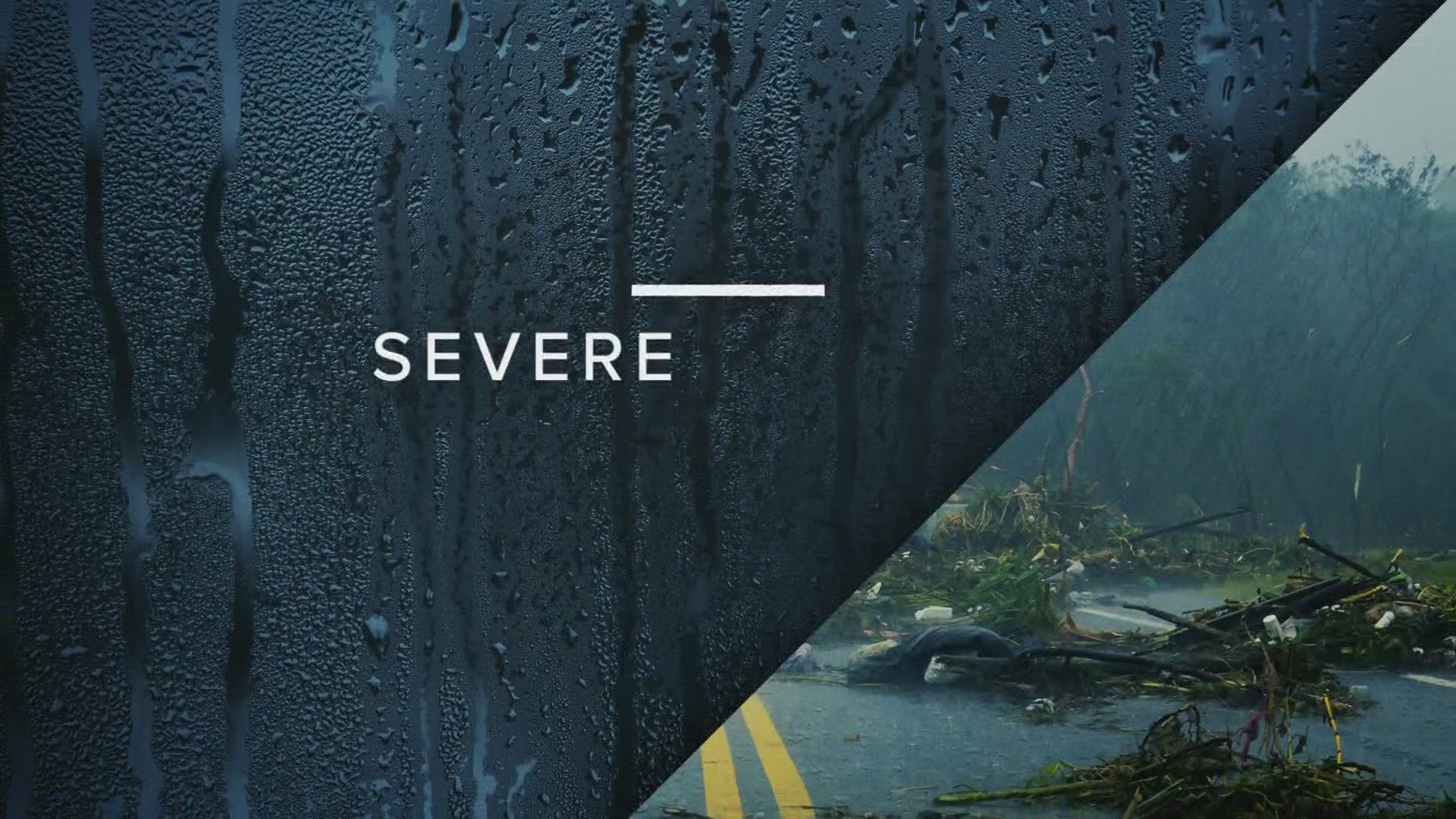GRAND RAPIDS, Mich. — While tornadoes are some of the most devastating natural disasters, straight-line high winds can sometimes be nearly as dangerous.
High winds can occur during a severe thunderstorm or a strong weather system, the National Weather Service (NWS) says.
Wind speeds of just 40-50 mph can cause isolated damage, but widespread significant damage can occur when thunderstorms bring straight-line winds with speeds up to 100 mph.
Preparing for a storm with high winds
Wind speed can pick up quickly during a storm, that's why it is always best to be prepared for the storm before it even begins.
The NWS has several recommendations to be prepared for the possibility of high winds.
Have a Plan
It is important to have a plan for you and your loved ones during a storm.
Identify a room in your home that can be used to take shelter. Interior rooms, like a bathroom, or your basement can work well. Take shelter in one of those rooms during the storm.
Make a list of things outside of your home that could blow away from high winds and make sure to secure them when a storm is forecast.
If you live in a mobile home, identify a study building you can go to that has a place to take shelter.
Have an Emergency Kit
Another thing you can do to prepare for storms with high winds is to have an emergency kit ready. Some basic things to include in the kit are:
- Flashlights and extra batteries
- Water (enough for three days)
- Canned food (enough for three days)
- Blankets
- Medication
- Baby supplies and pet food if applicable
- Battery-operated radio
What should I do to protect myself during high winds?
The NWS says that high winds can blow objects around, which can be a significant threat to your safety.
Take Shelter
Your first priority is to seek shelter if you are able. Go inside and move to an interior room or basement.
If you are in a mobile home, move to a sturdier building before the storm arrives if possible. Mobile home parks will sometimes have a clubhouse or other community building you can use to shelter in place.
If Caught Outside or Driving
If you are driving when the storm arrives, shelter in your car if you are unable to make it to a sturdy building. If possible, drive to a sturdy building to shelter in place.
Avoid parking your car in an area near trees or powerlines and stay on the side of the road. Also, avoid parking or driving near trucks or other vehicles with high profiles as they could be blown over.
If you can't stop driving during the storm, slow down and grip the wheel with both hands.
How do I stay safe after a storm with high winds?
Storms with high winds can cause severe damage to trees, powerlines and property. It is important to stay safe after the storm has ended.
Do not go near downed power lines because they could still be active. Consumers Energy recommends you stay at least 25 feet away from downed power lines and report them by calling 911 and Consumers Energy at 1-800-477-5050.
When cleaning debris from your property, be sure to be careful.
If you lost power during the storm and are using a generator, be sure to review these generator safety tips provided by Consumers Energy.
How to prevent damage to your property from high winds
There are steps you can take to prevent damage to your property from high winds.
The NWS recommends staying on top of tree branch trimming, making sure no branches are away from your home and power lines. They also recommend securing loose gutters and shutters which can be ripped off by the winds.
►Make it easy to keep up to date with more stories like this. Download the 13 ON YOUR SIDE app now.
Have a news tip? Email news@13onyourside.com, visit our Facebook page or Twitter. Subscribe to our YouTube channel.
Watch 13 ON YOUR SIDE for free on Roku, Amazon Fire TV Stick, Apple TV and on your phone.

